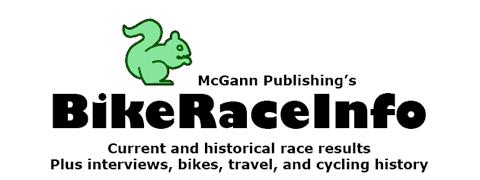

Doris Kopsky:
America’s First National Women’s Champion
By Peter Joffre Nye
Chairman Bill's note: Author Peter Joffre Nye's latest work is his biography of Albert Champion, The Fast Times of Albert Champion: From Record-Setting Racer to Dashing Tycoon, An Untold Story of Speed, Success, and Betrayal (Prometheus Books). It is available in hardcover and Kindle eBook.
Champion (1878-1927) was an incredible man, as a bicycle racer he was winner of Paris-Roubaix and set more than a hundred world records. He went on to found both the Champion Spark Plug Company and General Motors Division AC Delco Systems.
Just click on the Amazon link to the right to get your copy of this terrific book.
Also on this site is Mr. Nye's story of one of cycling's toughest-ever racers, Reggie McNamara. McNamara won over 700 races and was one of the greatest-ever six-day racers. Oh, and there's more! Nye's story of Joseph Magnani, the Illinois rider who challenged Coppi and Bartali.
Enjoy!

Doris Kopsky in 1937, Buffalo, N.Y. On the left is Furman Kugler, Junior Boys' champion and on the right is Charlie Bergna, Mens' Open Champion. Photo from Jeff Groman Collection.
Eighty years ago when the women’s division was introduced at the 1937 Amateur Bicycle League of America (predecessor to USA Cycling) nationals program in Buffalo, New York, Doris Kopsky of Bellville, NJ was fifteen and primed to win.
“I was used to racing against men,” she told me in 1992 when she was inducted into the U.S. Bicycling Hall of Fame. “I was a member of the Bellville Bicycle Club, which had a lot of old-time bike riders.”

James Witherell's book Bicycle History: A Chronological Cycling History of People, Races and Technology is available in print or as a Kindle eBook. To get a copy, just click on the Amazon link on the right.
Peter Joffre Nye continues:
One was her father, Joe Kopsky, a member of the 1912 Olympic cycling team that won a bronze medal in the 200-mile individual time trial, which served as the road race in the era of one-speed bikes. Kopsky used to tell how he finished on his bike’s wooden wheels after coarse roads shred his tires. He turned professional and made a name for himself in six-day races. Kopsky became known for stamina and for keeping the pressure on during the 144-hour grinds.
In the mid-1920s Joe Kopsky retired from racing and opened a bike shop in Belleville where he made custom frames. Doris turned 13 in 1935. Her father built her a track bike like all racers competed on. Joe Kopsky brazed a head badge featuring a large D for Doris on the crown of the frame. He taught her how to race.
“I did my sprint training on a flat half-mile stretch of road between Nutley and Belleville,” she said. “My father used to tell some of the old bike riders who came into his shop to race me. He told them, ‘She will beat you.’ I did, too.”
How did her mother, Genette, react to her daughter, an only child, following in her father’s wheel marks? “My mother was mad at my father for getting me into cycling. She didn’t consider cycling lady like. But it was only natural that my father would get me into the sport. I was the son my father never had.”
Race programs then consisted of the men’s open, a race for junior boys 16 and younger, and the women’s open. Doris Kopsky raced in events around the Middle Atlantic and Northeast. One of her first races was a 10-miler in the 1935 National Capital Sweepstakes, around the one-kilometer Ellipse behind the White House in Washington, D.C. “I won the race and received a china tea service. My mother was pleased with the prize.”
In 1937 in Buffalo the ABLA introduced a Girls’ division for women in the weekend program on roads in Humbolt Park. The Girls’ championship was the first ever sanctioned cycling nationals for women, more than a half-century after the League of American Wheelmen, the sport’s first governing body, held its debut nationals for amateur men in 1880 in the Atlantic Coastal resort of Newport, Rhode Island.
“There were three races that made up the first nationals for women,” Doris Kopsky Muller said. “Races were the half-mile, 5-mile, and 25 miles, with points awarded to the top five finishers of each race. There were about a dozen of us, including a few girls from Canada. My sprint training on that half-mile stretch paid off. I won the national championship.”
She was awarded a gold medal with a diamond chip in the center and a silk national champion’s stars and stripes jersey. Triumphing in the Men’s Open was Charlie Bergna of Paterson, NJ. The Junior Boys’ winner was Furman Kugler, a neighbor from Somerville and occasional training partner.
“After winning national championships, Furman and I really celebrated,” she said with a laugh. “We broke training and went out to eat a banana split and a strawberry soda.”
.









